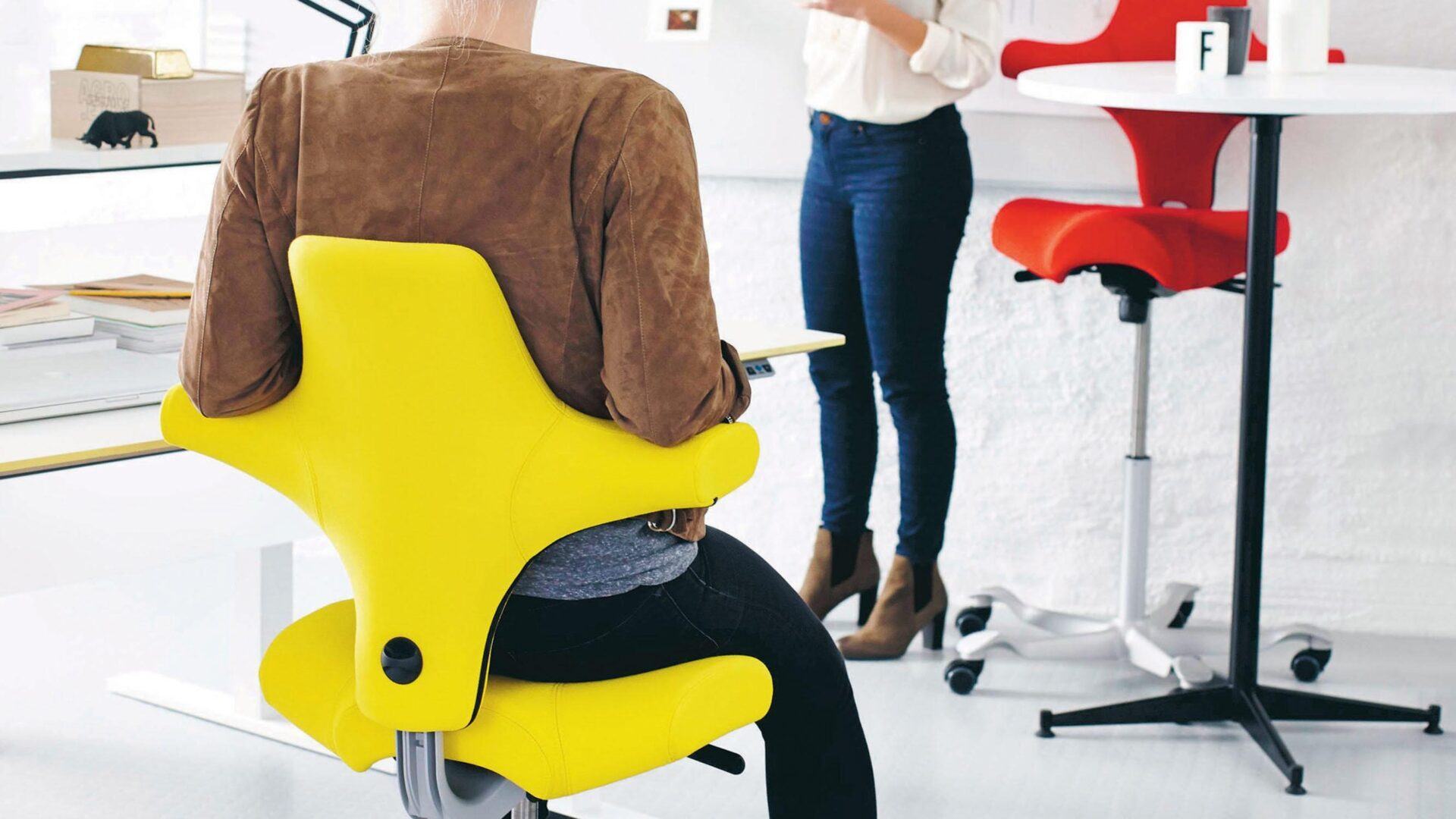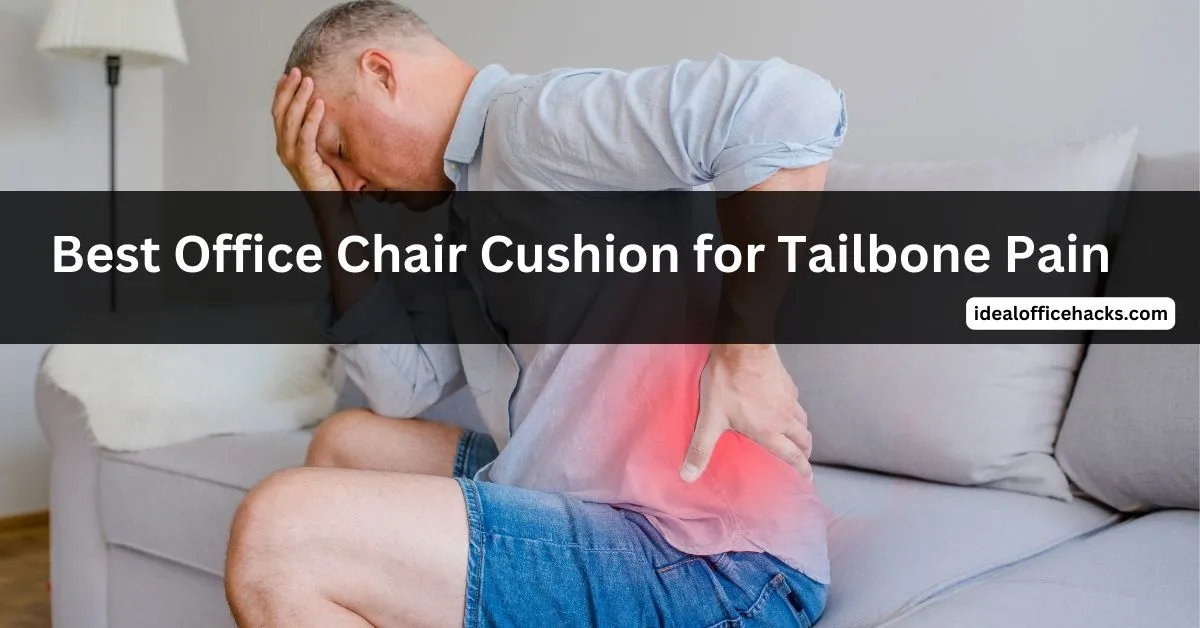Understanding Tailbone Pain and Office Chair Cushions

Tailbone pain, also known as coccydynia, is a common ailment that can significantly impact daily life. It can be caused by a variety of factors, including injuries, falls, and prolonged sitting. The tailbone, located at the base of the spine, serves as a point of attachment for muscles and ligaments, making it susceptible to pain and discomfort.
Understanding Tailbone Pain
Tailbone pain can manifest in various ways, ranging from mild discomfort to severe, debilitating pain. The intensity and location of pain can vary depending on the underlying cause. Common symptoms include:
- Sharp, stabbing pain
- Dull, aching pain
- Pain that worsens with sitting, standing, or walking
- Pain that radiates to the buttocks or thighs
- Tenderness to the touch
The Impact of Prolonged Sitting
Prolonged sitting, particularly in chairs that lack adequate support, can significantly exacerbate tailbone pain. When sitting for extended periods, the tailbone bears the weight of the upper body, putting pressure on the surrounding tissues and potentially causing inflammation or irritation. The lack of proper support can also lead to poor posture, further straining the tailbone and surrounding muscles.
Benefits of Office Chair Cushions
Office chair cushions can provide much-needed support and relief for individuals experiencing tailbone pain. These cushions are designed to distribute weight evenly, reduce pressure on the tailbone, and improve posture. By providing a layer of cushioning between the tailbone and the chair, these cushions can help alleviate pain and discomfort, allowing for more comfortable sitting.
Key Features to Look for in a Tailbone Pain Cushion: Best Office Chair Cushion For Tailbone Pain

Choosing the right office chair cushion for tailbone pain involves considering several key features. The goal is to find a cushion that provides adequate support, comfort, and pressure relief to alleviate pain and prevent further discomfort. This section will explore essential features that contribute to the effectiveness of a tailbone pain cushion.
Materials
The material of an office chair cushion plays a crucial role in its effectiveness. Different materials offer unique benefits, influencing comfort, support, and pressure distribution.
- Memory Foam: Memory foam is a popular material for cushions due to its ability to conform to the body’s shape, providing personalized support. It cushions the tailbone, distributing pressure evenly and reducing stress on the coccyx. Memory foam’s slow rebound property allows it to retain its shape, offering long-lasting comfort.
- Gel Inserts: Gel inserts are often incorporated into cushions to enhance breathability and cooling. The gel’s properties help dissipate heat, preventing the cushion from becoming overly warm, which can be uncomfortable, especially during prolonged sitting.
- Other Materials: While memory foam and gel inserts are prevalent, other materials like latex, buckwheat hulls, and even inflatable cushions are available. Each material offers unique benefits and drawbacks, so choosing the right one depends on personal preferences and specific needs.
Shape and Size
The shape and size of a tailbone pain cushion are critical factors in providing proper support and pressure relief. A well-designed cushion should accommodate the body’s natural curves and ensure the tailbone is adequately cushioned.
- Cut-Out Design: Many tailbone pain cushions feature a cut-out design in the center, creating a gap where the coccyx can rest. This design relieves pressure directly on the tailbone, promoting better blood circulation and reducing pain.
- Wedge Shape: Wedge-shaped cushions can help improve posture by tilting the pelvis forward, reducing strain on the lower back and tailbone. This design can be particularly beneficial for individuals with poor posture or those experiencing lower back pain alongside tailbone pain.
- Size: The size of the cushion should be adequate to provide sufficient support for the entire sitting area. A cushion that is too small may not offer adequate pressure relief, while a cushion that is too large can be uncomfortable and hinder movement.
Adjustable Height
Adjustable height is a valuable feature in an office chair cushion, allowing users to customize the cushion’s position for optimal comfort and support.
- Adjustable Height: Some cushions feature adjustable height settings, enabling users to fine-tune the cushion’s elevation to match their specific needs. This feature is particularly beneficial for individuals with varying sitting heights or those who need to adjust the cushion’s position throughout the day.
Popular Types of Tailbone Pain Cushions

Choosing the right type of cushion for tailbone pain can significantly impact your comfort and relief. Understanding the different types and their benefits can help you make an informed decision.
Coccyx Cushions
Coccyx cushions, also known as tailbone cushions, are specifically designed to provide support and pressure relief to the coccyx area. They typically feature a cutout or a dip in the center to alleviate pressure on the tailbone.
- Benefits: Coccyx cushions are effective for providing targeted support to the tailbone, reducing pain and discomfort. They can also help improve posture and reduce strain on the lower back.
- Drawbacks: Some coccyx cushions may not be suitable for all types of chairs, and they can sometimes feel bulky or uncomfortable for extended periods.
Wedge Cushions
Wedge cushions are shaped like a wedge, with one end higher than the other. They are designed to tilt the pelvis forward, reducing pressure on the tailbone and improving posture.
- Benefits: Wedge cushions can be effective for reducing tailbone pain, especially for people with sciatica or other lower back issues. They can also help improve circulation and reduce fatigue.
- Drawbacks: Wedge cushions may not be suitable for all chairs, and they can sometimes feel uncomfortable or unstable.
Donut Cushions
Donut cushions have a hole in the center, which helps to relieve pressure on the tailbone by distributing weight evenly.
- Benefits: Donut cushions are a popular choice for people with tailbone pain, as they can provide immediate relief. They are also relatively inexpensive and easy to find.
- Drawbacks: Donut cushions may not be suitable for all types of chairs, and they can sometimes feel unstable or uncomfortable for extended periods. They can also be less effective for people with sciatica or other lower back issues.
Seat Cushions, Best office chair cushion for tailbone pain
Seat cushions are designed to provide general support and comfort for the entire buttocks and lower back. They can be made from various materials, including memory foam, gel, and air.
- Benefits: Seat cushions can help to reduce pressure on the tailbone and improve posture. They can also provide additional comfort and support for people with other conditions, such as back pain or sciatica.
- Drawbacks: Some seat cushions may not be specifically designed for tailbone pain, and they may not provide as much targeted support as coccyx cushions or wedge cushions.
Best office chair cushion for tailbone pain – If you’re dealing with tailbone pain, a good office chair cushion can be a lifesaver. But if your sciatica is acting up, you might need a more serious upgrade. A good computer chair can make all the difference in managing sciatica pain, and you can find some great options by checking out this guide to the best computer chair for sciatica.
Once you’ve got your chair sorted, don’t forget to invest in a comfy cushion to support your tailbone and keep you comfortable all day long.
If you’re dealing with tailbone pain, a good office chair cushion can make a huge difference. But if you’re also struggling with degenerative disc disease, you might need to look at a more comprehensive solution. A chair designed to support your spine and reduce pressure on your discs can be a game-changer, and you can find some great options by checking out this guide on the best chair for degenerative disc disease.
Once you’ve got the right chair, a supportive cushion can still be helpful for additional comfort and pressure relief in your tailbone area.